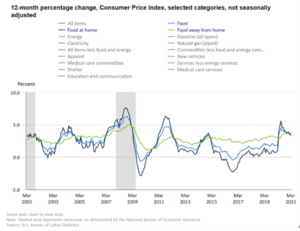
Recently, a YouTube video was released and repeated misleading claims about biofuels. These claims are untrue, outdated, and debunked so we’re here to set the record straight.
Read below to get the whole story on biofuels from the experts, instead of a guy who didn’t know what a bushel of corn is…
WHY BIOETHANOL?
With the ability to reduce greenhouse gas emissions by 46% compared to gasoline, biofuels, like bioethanol, are the clean fuel solution available today.
Bioethanol made from corn and cellulosic biofuels derived from renewable biomass can significantly cut carbon emissions from fuel, meaning drivers can feel better about reducing their transportation footprint. And because bioethanol is the lowest cost, highest octane fuel on the planet, future internal combustion engines should take advantage of this characteristic to allow greater efficiency gains in vehicles.
Since 2008, biofuels have already reduced carbon emissions from U.S. cars and trucks by nearly 1 billion metric tons. Moving to E15 would reduce CO2 emissions the equivalent of taking 3.74 million cars off the road. And with off-the-shelf technologies and best practices, bioethanol could reach 71% GHG reduction relative to gasoline next year.
To address our nation’s urgent climate concerns, the liquid fuels of today must be improved and replaced with cleaner and more advanced liquid options that harness the clean power of biofuels.
ONGOING INNOVATIONS DRIVES SUSTAINABILITY IN BIOFUEL PRODUCTION
The steady demand for biofuels has helped farmers make more efficient use of existing cropland, supplying consumer markets with more food and energy than ever before — all while protecting grasslands and forests.
- In fact, America’s farmers are producing more food and energy than ever before. Today, they grow five times as much corn as they did in the 1930s on 20% less land.
- Farmers have also decreased the volume of water used for irrigating each acre of corn — thanks to smarter farming techniques. With these increasingly sustainable practices, farmers are producing record harvests without the need for more fertilizer or pesticide.
- And it’s not just on the farmland that we’re seeing strides in innovation. At bioethanol plants, the 42 percent drop in energy consumption can also be credited to new technologies and practices that improve year over year.
Check out our 2019 study on these topics and more here.
BIOFUELS DON’T DRIVE CORN AND FOOD PRICES
- Data from USDA ERS and the U.S. Bureau of Labor Statistics food price inflation from 2016-2020 was equal to inflation economy wide. The all-food Consumer Price Index (CPI) rose 7.8%, which was the same as the all-items CPI category, including the average of medical care, housing, food, recreation, transportation, education and communication and apparel.
- According to USDA ERS, generally, retail food prices are less volatile than farm prices, with the average farm price of corn, wheat and soybeans rising or falling by more than 10 percent from year to year. When looking at the overall, these price swings have minimal impacts on food prices.
- According to USDA ERS Marketing Bill Series in 2019, the farm share of the food dollar is 14.3 cents, and the marketing bill was 85.7 cents.
BIOFUELS ARE MORE THAN JUST BIOETHANOL
Sure, we produce bioethanol for transportation, but did you know we also produced a number of other co-products?
